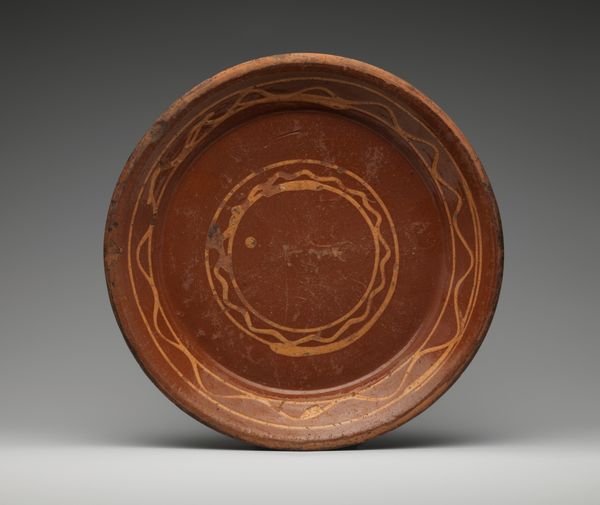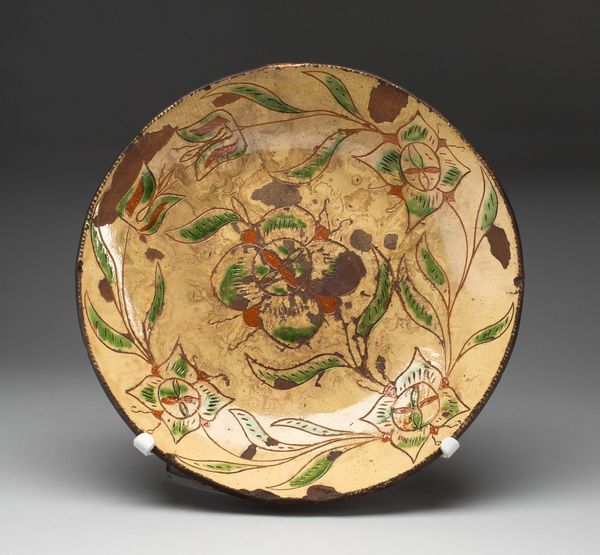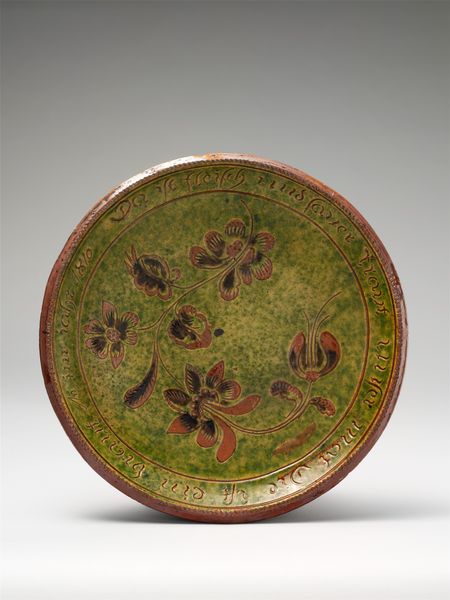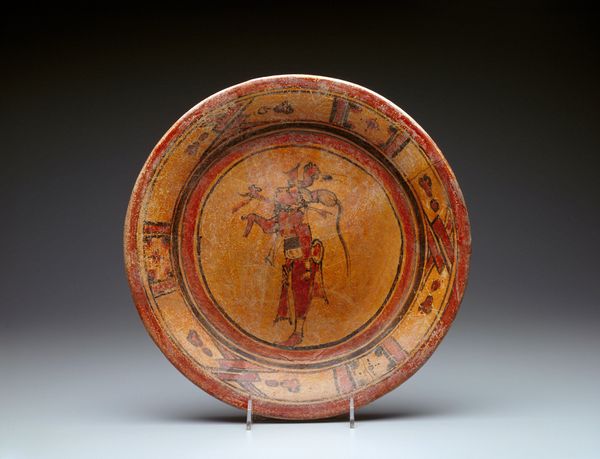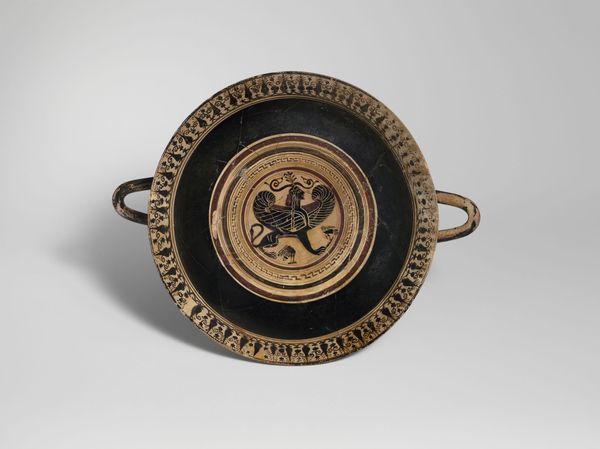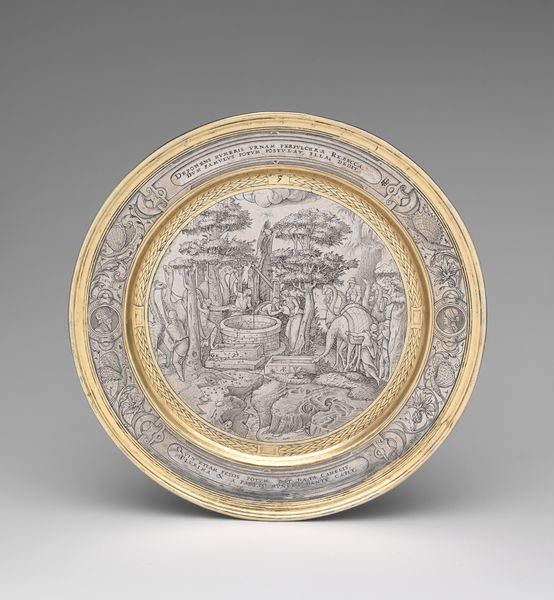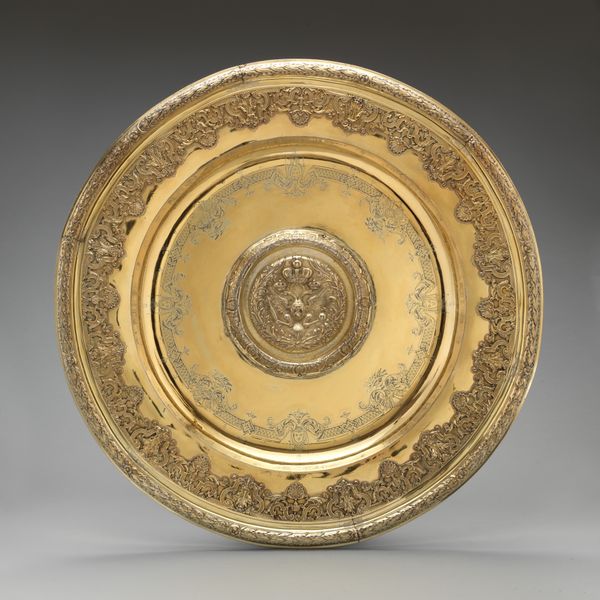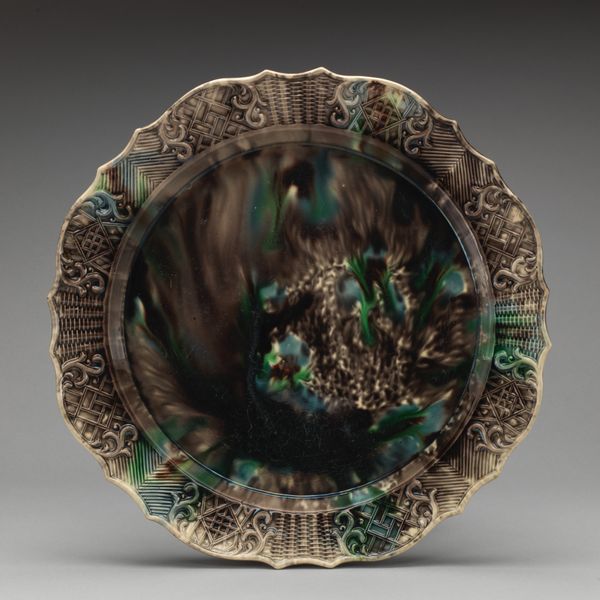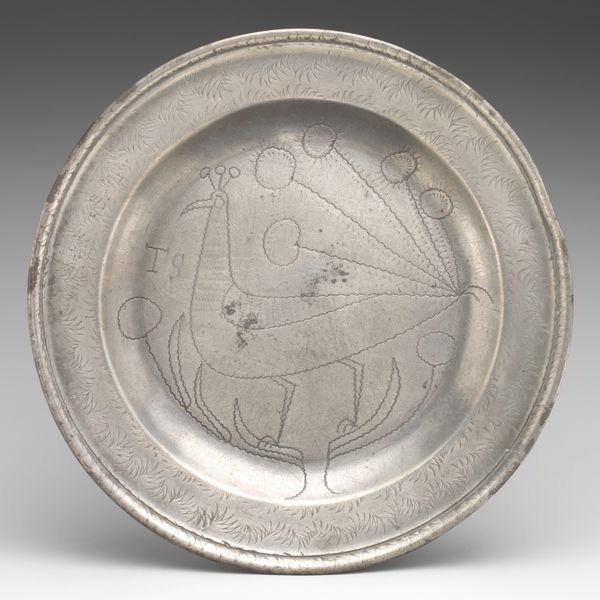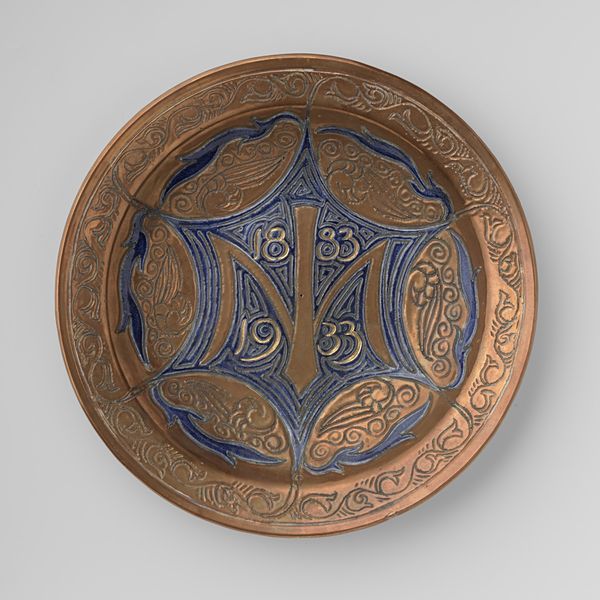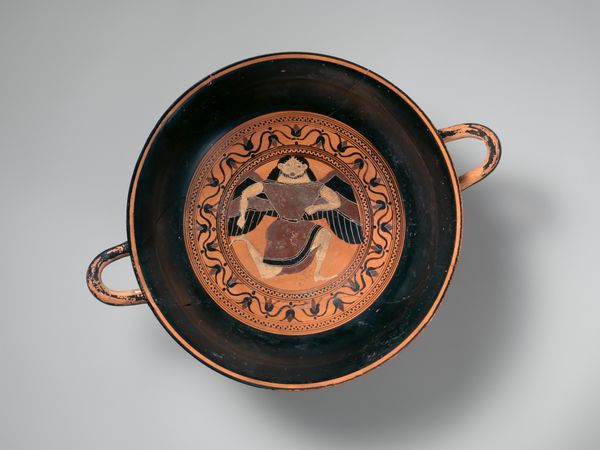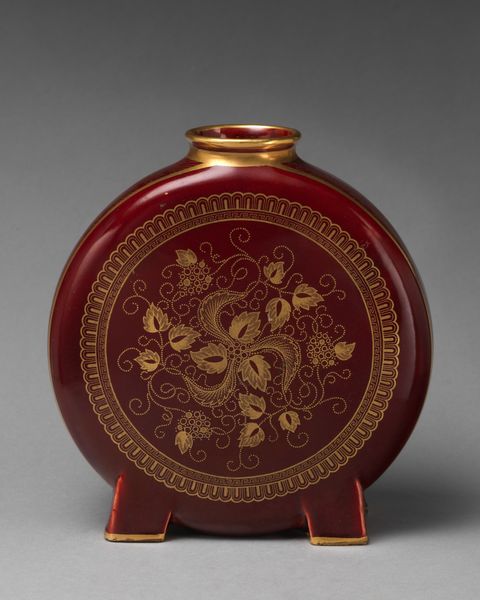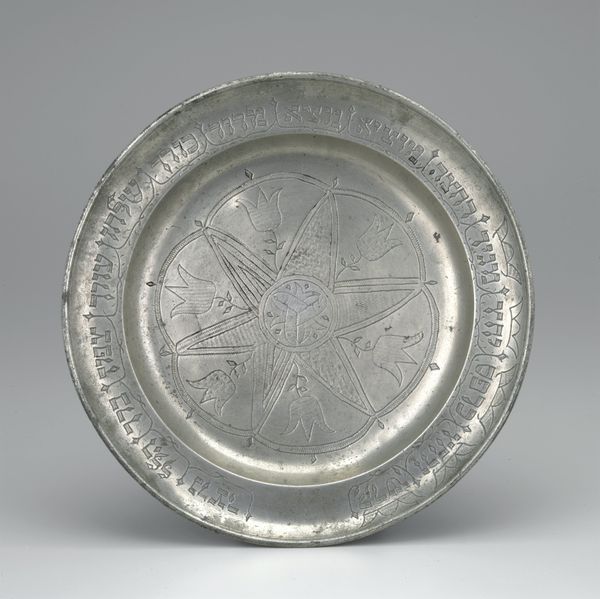
ceramic, earthenware
#
pottery
#
ceramic
#
flower
#
earthenware
#
stoneware
#
folk-art
#
ceramic
#
decorative-art
Dimensions: Diam. 12 in. (30.5 cm)
Copyright: Public Domain
Editor: Here we have a late 18th-century earthenware plate, likely a piece of folk art. It's currently held at the Metropolitan Museum of Art and made by John Leidy I. There's some decoration and some text inscribed, and its surface shows its age. I must say, the composition appears quite naive and rather charming. How would you interpret it? Curator: Well, let’s examine the visual elements closely. Note the repetitive radial pattern. The placement of floral motifs—how they’re distributed in relation to the circular form—creates a balanced, though asymmetrical, composition. Consider the incised text bordering the piece: does the script's form hold visual weight or meaning, beyond its semantic value? Editor: I see what you mean about the flowers and the symmetry... sort of! And yes, the lettering does have a real visual impact – it adds to the piece's decorative quality even if I can’t read it. The green, yellow and dark accents also give the plate depth in terms of colour composition. Curator: Exactly. The color choices, the seemingly simple rendering of the botanical elements. Are these meant to reflect the real world, or are they deploying color as an independent formal element? How does the flatness of the image interact with the three-dimensionality of the plate itself? Do these choices reflect folk-art's broader approach to materials and representation? Editor: Those are compelling points, examining the forms within their literal framing. It’s easy to look past the composition in decorative pieces like this and only consider their function or historical background. I’ve learned today is not to! Curator: Precisely. Attending to the formal elements first helps us consider intention and meaning beyond the obvious.
Comments
No comments
Be the first to comment and join the conversation on the ultimate creative platform.
